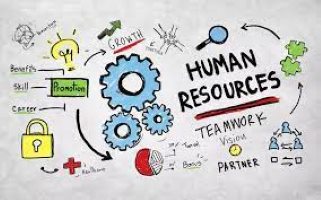Artificial Intelligence is all over the place these days, making things easier in all fields of life. Whether it is our daily life or work life, AI has become a necessity everywhere.
Artificial Intelligence is connected to Performance management through different. Measures which are used to conclude employee performances to gather data driven results.
This helps the management to finely observe the employee performance without being biassed and unreasonable. The advent of artificial intelligence (AI) has brought about a significant transformation in data driven employee development. AI has become a powerful tool, enabling companies to collect, analyse, and utilise vast datasets to improve performance, support well-informed decision-making, and promote employee development.
Employee Development With Artificial Intelligence:
Through artificial intelligence organisations can now offer employee development programs with vast AI tools and programs which deliver adaptive learning experiences to the employees. The management can assess an individual’s skills, strengths, and areas for improvement, tailoring training programs accordingly. Moreover, AI can provide real-time feedback and recommendations, allowing employees to continuously enhance their performance.
Through employee development with artificial intelligence companies can ultimately lead to a more skilled and adaptable workforce that can thrive in today’s rapidly changing business landscape.
Common AI Metrics Used for Performance Management:
- Performance Evaluation Algorithms:
AI can be used to evaluate performances of the employees through algorithms specially made to monitor the employees. These algorithms consider various factors such such as individual and team performance, client feedback, and project outcomes.
- Future Analysis:
This is one of the demanding and inspiring tools of AI that helps in analysing the future performances including sales forecasts, customer churn rates, or employee turnover. This allows organisations to proactively address potential issues.
- Monitoring and Feedback Tools:
AI driven employee performance insights are valuable assets to monitor and generate real time feedback. This includes monitoring keystrokes, screen time, and even sentiment analysis of written communication.
- Natural Language Processing:
NLP methods empower the examination and comprehension of unstructured information, such as employee feedback and performance evaluations. AI-driven Natural Language processing can extract sentiments, and offer automated summaries of text data related to performances.
Common AI Tools Used For Data driven employee development:
- Tableau: Tableau offers AI-driven employee performance insights and data visualisation tools to help organisations track and manage performance through interactive dashboards.
- Salesforce Einstein Analytics: This AI-powered platform provides insights into sales and customer service performance, helping businesses make data-driven decisions.
- IBM Watson Analytics: Watson Analytics offers advanced analytics capabilities to generate AI driven employee performance insights, including predictive analytics, to help organisations understand and improve performance.
- SAP Analytics Cloud: SAP’s platform integrates AI and machine learning to provide insights into various aspects of business performance, including finance, HR, and supply chain.
- Microsoft Power BI: Power BI utilises AI and machine learning to create interactive reports and dashboards, allowing businesses to monitor and analyse performance insights.
These tools facilitate sentiment analysis, theme identification, and automated summarization, contributing to more informed decision-making in performance management.






